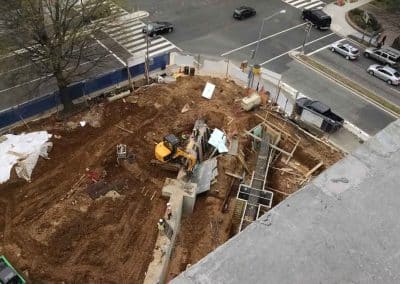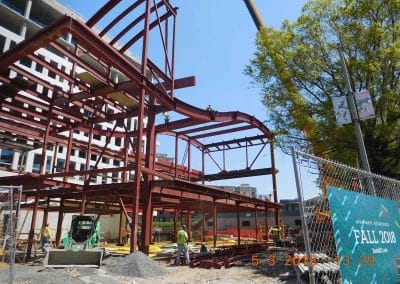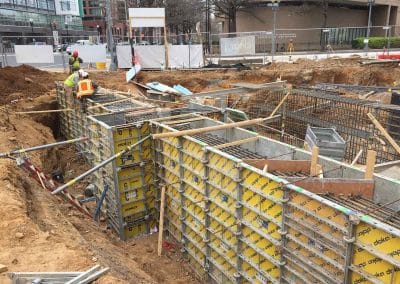Riverside Baptist Church
Project Location
Washington, D.C.
Washington, D.C.
Project Type
– Mixed Use/ Multi-Family Residential
– Worship
Services
– New Construction
A new two-story $5.6 million, approximately 11,000 SF church facility built adjacent to a new nine-story apartment building as part of a land swap deal. The building is within the “zone of influence” for Metro tunnels and required WMATA design submissions and approval.
The Project
The Riverside Baptist Church Redevelopment project is an integral piece of the new Wharf master development in Southwest Washington, DC. The project consists of an 11,000 SF, two-story church building constructed adjacent to a nine-story above grade, three-story below grade, 230,000 SF, mixed-use building. The top eight levels of the mixed-use building are residential apartments with a rooftop terrace at the penthouse level; a portion of level one is dedicated to retail.
The Challenges
- Existing Metrorail tunnels below the church building footprint.
- Significant setback at levels 1 and 2 of the mixed-use building.
The Solutions
- The footprint of the church building extends over the existing Metrorail tunnels which pass approximately 24 feet below the site near the corner of 7th Street and Maine Avenue. To support this corner of the building, two (2) 8-foot, 6-inch-deep post-tensioned concrete grade beams are cantilevered up to 32 feet over the Metro tunnels. The grade beams are supported on auger cast piles that extend below the Metro tunnels.
- Due to significant setbacks in the mixed-use building at the first and second floors, several columns could not extend down to the ground. To support these columns, three post-tensioned concrete transfer girders cantilever out at the main roof level, and the columns are designed to hang from them, extending down to the 2nd and 3rd floor slabs. Since the permanent support of these columns was not provided until the roof level concrete was placed, cured, and the PT beams stressed, temporary steel columns were designed. Specific sequencing and jacking requirements were developed to safely transfer loads to the permanent hung columns.



